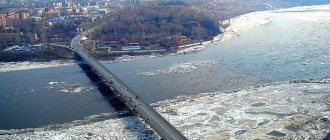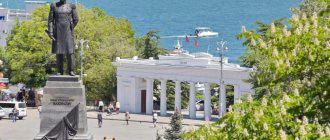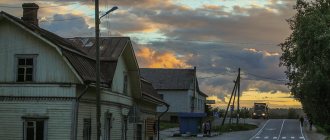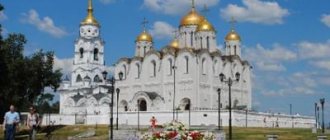The capital of the Urals is delightful and mysterious. Walking around the city, you can clearly read the history of all of Russia, from the 18th century to the present day. A wide variety of styles are surprisingly combined here - provincial modernism, Soviet Empire style and industrialism, as well as modern deconstructivism and high-tech.
Walking and car excursions around the metropolis will give tourists considerable pleasure. An inquisitive traveler will be able to discover a lot of historical facts and legends, as well as visit places that are loved by local residents and visitors to the city.
Briefly about the history of the city
Yekaterinburg is a city created during the development of the Volga region and the Urals. This serious project was started by Peter the Great and carried out by his associates. Among them are the scientist and master Wilhelm de Gennin, a Dutchman, and the statesman, scientist Vasily Tatishchev. They are considered the founders of the city. The first plant to appear here was for the production of copper and steel - in 1723. At that time it was the most progressive, technically equipped enterprise in Russia. And a city began to grow next to the plant. The name Yekaterinburg was given to it in honor of Empress Catherine the First, wife of Peter. The city, in addition to the manufacturing giant that it remains to this day, at that time became a kind of window to Asia, because the Great Siberian Highway, a road necessary for trade and other communications, passed through it.
Yekaterinburg in the 18th century
In the 20th century, Yekaterinburg became the center of the revolutionary movement, led by Yakov Sverdlov - it was in his honor that the city was called Sverdlovsk throughout the Soviet years. In 1917, the family of the last Emperor of Russia was killed here.
The Soviet years were the development of industry, the creation of the largest production enterprises, including the Ural Heavy Engineering Plant. As well as the development and expansion of the city, its social and cultural part. During perestroika, in 1991, the city returned its historical name - Yekaterinburg. At the moment, it remains one of the largest cities in Russia, including a tourist center.
The so-called red line has been organized especially for tourists - this is really a 6 km long line passing through the city, following which you can see many attractions in one day: historical estates, temples, monuments of antiquity, culture, nature.
By following the red line, you can see the city's main attractions in one day.
Alexander Nevsky Cathedral
- Address: st. Green Grove, 1, Ekaterinburg
Alexander Nevsky Cathedral is definitely one of the ten most outstanding architectural sights of Yekaterinburg. This is a majestic white building, designed in a classical style, with powerful columns and large domes. Since its construction in 1838, this building has seen many eras and changes, being one of the oldest buildings in the city, but it has managed to survive and is well preserved. Social cataclysms did not destroy the temple: for some time it served as a repository for the museum’s collection, and in 2013 it underwent restoration and was reopened to Orthodox parishioners.
Place where the city of Yekaterinburg was founded
Where the first Ural plant was founded, you can now see a lot of interesting things.
Dam
This is how the townspeople affectionately call the real dam on the Iset River. Now this is the very center of Yekaterinburg, and once upon a time it was where the city began. By decree of Vasily Tatishchev, the construction of the dam began in 1721. It provided energy for the Yekaterinburg plant created here. From there came the construction of everything else. Thanks to the dam, a reservoir called the City Pond appeared. The Museum of Architecture and Industrial Technology of the Urals housed its exhibits in the buildings of the former plant. The main avenue of the city, Leninsky, passes through Plotinka.
The length of the structure reaches about 200 meters, the width is about 40, the material used is larch, which is not afraid of water, and granite.
The dam is a combination of past and present in the city center.
Now Plotinka is one of the most favorite places of the townspeople, folk festivals take place here, dates are made, newlyweds come here. Guests of Yekaterinburg also visit the place with interest and take photographs where the city once began.
Boris Yeltsin Presidential Center
- Address: st. Boris Yeltsin, 3, Ekaterinburg
The Yeltsin Center is one of the most unusual and memorable modern attractions of Yekaterinburg. Instead of a standard museum in an old house, a huge and modern historical complex opens before guests. Unusual design, modernist solutions and a focus on interactivity - this is the new museum of modern Russian history. It is always crowded here, there are a lot of young people and children. It was these visitors who were counted on when planning the establishment. The Yeltsin Center is an attempt to introduce the younger generation to the history of the Russian Federation with the help of the latest technologies and bright presentation.
Historical city square
The city pond is limited on one side by the city's Historical Square. It is located on the site where that same plant was located - the first production facility in Yekaterinburg producing cast iron products. Thanks to which the city was built and received opportunities for trade and development.
And now it is a place for walks and recreation for local residents and tourists. The square was created in 1973, when Yekaterinburg (Sverdlovsk) celebrated its 250th anniversary. The day before, reconstruction was carried out, the old factory buildings were demolished. However, some of the buildings remained, and today museums are located here:
- Architecture and industrial technology of the Urals;
- Nature of the Urals;
- Visual arts.
There are also monuments in honor of the people of whom the Urals are proud: Vasily Tatishchev and Wilhelm de Gennin, Pavel Bazhov, Dmitry Mamin-Sibiryak. You can also admire the ancient gates - they used to be part of the complex of fences in this area, now there is no enclosing wall, but several gates remain.
Where the first plant once was, there is a Historical Square
Limpopo Waterpark
- Address: st. Shcherbakova, 2, Ekaterinburg
For those wishing to cool off on a hot summer day, this water park will come in very handy. Limpopo is a large area with a variety of swimming pools, waterfalls and slides for children and adults. Guests of Yekaterinburg should definitely stop by here if they want to have a fun time. In addition to the water attractions themselves, there are cafes, bath and spa complexes and bars in the park. A visit to spa treatments will bring a lot of benefits to adults, given that there is professional equipment and experienced specialists.
Monument to Tatishchev and de Gennin in Yekaterinburg
Vasily Tatishchev and Wilhelm de Gennin are the founders of Yekaterinburg. De Gennin, a native of the Netherlands, came to Russia, becoming close to the associates of Peter the Great. Here Vilim Ivanovich called himself. He was interested in science and technology, and was able to realize all his talents in Russia. He took part both in Peter’s military operations and in the implementation of his construction plans. In particular, he worked on the construction of various objects in St. Petersburg. It is especially famous for the construction of factories and manufacturing enterprises. Later, during the development of the Urals, he drew up a project for Empress Catherine to found a plant for the production of steel and copper, which became the beginning of Yekaterinburg.
However, this project was initially proposed for the highest consideration by Vasily Tatishchev. A prominent statesman, scientist and historian, he forever inscribed his name in the development of the Ural and Volga territories, and is rightfully considered the founder of several Russian cities. However, for some reason, Tatishchev’s plan to move the plant (it existed in another place) was rejected, and Vasily Nikitich himself was recalled to St. Petersburg. De Gennin took his place. Therefore, both of them are deservedly considered the founders of the plant, and therefore the city of Yekaterinburg. Although in real life they did not like each other, this was their fate.
The monument to great people appeared on Labor Square in 1998. They made bronze monuments for.
There is an inscription on it: “To the glorious sons of Russia V.N. Tatishchev and V.I. de Gennin, Ekaterinburg is grateful.”
It is interesting that due to the similarity, even the residents themselves often do not distinguish between their heroes, who is who. Moreover, according to the sculptors’ plans, there is a Dutchman on the left in a cocked hat, and Tatishchev on the right, but in the inscription their names are in reverse.
Wilhelm de Gennin and Vasily Tatishchev are immortalized on the monument together.
2. Dam
- Address: Lenina Ave., Ekaterinburg
The dam is one of the most famous historical landmarks of Yekaterinburg. Back in the time of Peter the Great, they decided to build a dam here from wood and granite, but during the creation process, the projects were repeatedly changed and it was rebuilt. Soon it acquired its own pond and was “overgrown” with other buildings: monuments to Peter and Catherine the First appeared here, a beautiful public garden was created and a Mint was built. Today, it is here that Yekaterinburg residents celebrate various festivals, organize shows and fun large-scale celebrations.
Vayner Street
Ural Arbat is what locals call Vayner Street. This is the oldest highway in the city; in the 19th century it was called Uspenskaya after the name of the local church. And it appeared a century earlier. After the revolution it received the name Leonid Weiner.
Vayner Street – Ural Arbat
It’s impossible not to notice that the street is ancient. Along it there are mansions of merchants, estates of wealthy citizens, buildings that housed trading shops, and administrative institutions. Today, many of these buildings are protected as cultural heritage sites. But in fact, the Ural Arbat is not the name of the entire street, but its pedestrian part between Lenin Avenue and Kuibyshev Street - the so-called central alley of the city, where you can have a wonderful walk, see architectural objects, and do shopping.
Literary Quarter
A unique museum complex, the likes of which are no longer found in all of Russia. The Literary Quarter unites several museums. We are talking about the House-Museums of D. N. Mamin-Sibiryak, F. M. Reshetnikov, P. P. Bazhov, Museums of the literary life of the Urals in the 19th and 20th centuries, the Museum of dolls and children's books “Wonderland”.
Literary Quarter
Ancient buildings, cobbled streets, ancient trees and the spirit of literary creativity attract tourists. There is a society of writers in the quarter, and a newspaper is published.
- Address: Proletarskaya street.
- Museum opening hours: Tuesday-Sunday - from 10:00 to 18:00.
- Ticket price: adult – 200 rubles, schoolchildren, pensioners, students – 100 rubles.
Sevastyanov's house in Yekaterinburg
This building is a real decoration of Yekaterinburg. Bright, large, beautiful, impressive, it is considered one of the most expressive in the city. It is often called a palace. It was built at the beginning of the 19th century. Even then it had a look that was far from what it is now. The main rotunda, the main feature of the house, was already there, as can be seen from previous city plans. This element of architecture was the only one in Yekaterinburg at that time. Later, the first owner sold the house to collegiate assessor Nikolai Sevastyanov. He was one of the richest residents of the city at that time. At his request, the building was supplemented and rebuilt, and acquired many decorations.
Sevastyanov's house was unique in its time, and today it is a real decoration of the city
After a while, the owner, as far as we know, moved to the capital, and the house was bought by the city authorities. The district court was located there. During the revolutionary events, the house was subjected to pogrom. Later, the Ural Commissariat of Labor was established here, and the first city conference of the Bolsheviks took place here. During Soviet times, the building served the regional council of trade unions, so residents of the older generation remember it as the House of Trade Unions. After perestroika, changes occurred again in the fate of this building - it was occupied by various offices.
In 2008, the Sevastyanov House was recognized as an object of cultural heritage of Russia; after reconstruction, it now houses the residence of the President of the Russian Federation. The appearance of the house is captured on a commemorative silver coin of the Central Bank.
Several legends are known about this building, which may have little to do with reality. Although - who knows...
- According to one of them, assessor Sevastyanov did not go anywhere, but having built a beautiful house, he settled nearby in a nondescript hut, and in the evenings he went out to sit on a bench and admire the architectural beauty.
- Another legend: supposedly Sevastyanov wanted to cover the roof of the house with gold and even submitted the highest petition. However, he was refused on behalf of the sovereign with the explanation that gold was only suitable for temple domes. And so that he would not forget about this, he was ordered to go to the nearest church every morning in cast iron shoes.
Of course, this is difficult to imagine in reality. But tourists will be very pleased to admire the building, which is associated with numerous historical transformations and even legends.
Circus
- Address: st. March 8, 43, Ekaterinburg
What adult doesn't love the circus? The Yekaterinburg Circus is truly a real landmark of Yekaterinburg. It is located in a spacious building with a very interesting, modern design. The building in the form of a huge empty ball will certainly be remembered by everyone who sees it. Inside, spectators will find incredible entertainment: here you can not only watch traditional circus acts, but also admire the performances of trained animals, professional acrobatic and choreographic performances, and much more. This place has selected the best elements of world circus art.
You have already voted
Rastorguev-Kharitonov estate
The Rastorguev-Kharitonov estate is a whole complex of mansions, outbuildings with a park
The estate and park complex of the Rastroguev and Kharitonov families is one of the largest and most interesting in Yekaterinburg. Built in the style of classicism at the beginning of the 19th century, it was acquired by the merchant Lev Rastorguev, and later passed to his daughter and son-in-law Pyotr Kharitonov, who expanded and enriched the estate, laid out a park with a lake and a rotunda house in the middle. The park is adjacent to the city Kharitonovsky Garden, where adults and children enjoy spending time.
Kharitonovsky Garden is one of the most beautiful places in the city created by man.
There are a lot of legends associated with the estate:
- According to one of them, Rastorguev secretly adhered to the Old Believers and in the dungeons of his house he arranged premises for worship, where many adherents of this branch of Christianity gathered.
- According to another, the estate project was created by an unnamed convict who was promised freedom after completing the order, but he was deceived and committed suicide in prison.
The dungeons and secret passages of the estate have become the subject of special speculation; their presence was confirmed when, in Soviet times, collapses occurred in certain places and underground corridors emerged.
Museum of Military Equipment UMMC
- Address: st. Alexandra Kozitsyna, 2, Verkhnyaya Pyshma
This branch of the museum of military and civilian equipment is very popular among both children and adults. Incredible collections of steam locomotives and old cars attract the attention of many visitors. Particular attention is paid to the exhibition of military equipment, which contains tanks, military vehicles, fighter planes, motorcycles and other vehicles that survived the Second World War. There really are a lot of great exhibits here! A visit to this museum in Yekaterinburg will be interesting for both history buffs, schoolchildren, and ordinary citizens who want to see with their own eyes the legendary military equipment of Soviet times.
Church on the Blood in Yekaterinburg
Religion and history are closely intertwined in our country, and a striking example of this is the Church on the Blood in Yekaterinburg. It was erected at the beginning of this century exactly on the spot where the Ipatiev House stood. It was in this building that the royal family spent their last days, and right there in the basement, former Emperor Nicholas II, his wife, four daughters, a son and four servants met their death.
Subsequently, Ipatiev’s mansion was demolished, leaving only a vacant lot, and during perestroika, flowers, candles, and unauthorized crosses began to appear in this place. After certain efforts and processes, work began on the construction of the temple.
Instead of the infamous Ipatiev House - the Church on the Blood
The full name of the church is the Temple of the Monument on the Blood in the name of All Saints who shone in the Russian land. It was consecrated in 2003, the temple is operational. And at the same time, it is one of the main tourist attractions of the city.
The temple has two levels and five domes. Many windows, a white marble iconostasis at the top - and a dim, low-vaulted room at the bottom. It seems to refer us to the terrible events of the execution basement.
The temple complex includes the Museum of Royal Martyrs. Nearby there is a sculpture of the dead - they are depicted going down to the basement to be shot. This is a place of real pilgrimage for all who worship the Holy Great Martyrs Nicholas and his loved ones.
Attractions
Ekaterinburg has something to surprise its guests. History and modernity are closely intertwined in this city. Museums and galleries, monuments of architecture, religion, culture, modern and avant-garde buildings, unique monuments - the list of attractions is very wide.
Monuments and sculptures
At every step in Yekaterinburg there are various monuments. Art objects complement the landscapes and give the city streets a special charm and sophistication. On Weiner Street there is a sculpture “Gena Bukin”. This is the same TV character who sold shoes. The figure is cast from bronze, its height is more than 2 m, its weight is about 400 kg. In the center of the city is the world's first Monument to the Invisible Man, which is made in the form of a bronze slab with footprints. Other notable monuments include:
- Monument to Marshal Zhukov;
- Sculpture “Hare and Wolf” from the cartoon “Well, wait a minute!”;
- Monument to Vysotsky and Marina Vladi;
- Sculpture “Comrade Bender and Kisa Vorobyaninov”;
- Monument to the plumber Athos;
- Monument to the Janitor;
- Monument to the "shuttles";
- Sculpture "Greenwich";
- Monument to Curiosity;
- Monument to the first steam locomotive;
- Monument to Tatishchev and de Gennin;
- Monument to Michael Jackson, etc.
One of the most remarkable and memorable sights of Yekaterinburg is the Monument to the Keyboard. The keys are cast from monolithic concrete. The weight of one element is 100-500 kg. The composition is a successful imitation of a keyboard. The author of the project is A. Vyatkin. The monument is located on the embankment of the Iset River. He appeared here in 2005. The keys are so large (30:1 scale) that they are sometimes used as benches. The composition has already been restored several times because vandals stole the concrete buttons.
Museums of Ekaterinburg
The museums of Yekaterinburg are no less interesting. There are many of them here; it is impossible to see them all in one day. The exhibitions are very diverse. The Museum of the History of Medicine is an amazing place, opened to the public in 1982. More than 70,000 exhibits are presented, including a collection of surgical instruments, hospital furniture, medical histories, vaccines, drugs, ophthalmological instruments, etc. The guide will tell you what medicine was like in different periods of history and introduce you to famous doctors.
The museum and exhibition is the preserved life of Yekaterinburg residents of the 19th century. The house of a wealthy entrepreneur today serves as a museum with permanent and temporary exhibitions. Attracted by luxurious furniture, original children's toys, expensive German dolls, and interior items. There is a unique wardrobe, the doors of which are decorated with scenes from Goethe’s novels. Musical evenings and concerts are regularly held here.
Sevastyanov's House
This is not just a house, it is a real palace, which is rightfully considered one of the most memorable attractions of the city. The building acquired its modern appearance in the 60s of the 19th century. The project was developed by architects Paduchev to the order of the owner Nikolai Sevastyanov. The features of this object include volume, complex decor, and a successful combination of baroque and gothic. After the owner left for the capital, the district court was first located in the house. In 1917, the palace was destroyed and looted. A major restoration was carried out only in 2008. The craftsmen restored the previous colors, shapes, and decor. Today there is a presidential residence here.
Cinema and concert theater "Cosmos"
It is difficult to imagine that this modern building with glass facades and strict forms was built in the last century and has been in operation for a long time. Together with the Monument to the Lumiere Brothers, the theater presents an amazing architectural composition that attracts passers-by at first sight. His birthday is considered to be December 25, 1967, when the premiere of the film “Iron Stream” was shown. Since that time, various authoritative events, film festivals, and exhibitions have been regularly held here. Not only domestic but also foreign stars performed on the stage of the Cosmos Theater, including The Rasmus and The Prodigy. In addition, conferences and symposiums are held here.
The cinema was recently completely reconstructed. The old seats were replaced with new, wider and more comfortable ones. We installed high-tech sound equipment of the new generation Dolby Surround EX. Thanks to the thoughtful design of the facade using composite panels, the building was given a special chic. “Cosmos” shows films in 3D format. There are three halls: one for 2000 spectators and the other two for 126 seats each.
Observation deck "Antey"
In the very center of the city there is the Antey skyscraper. This is a huge complex where hotels and restaurants, office space and shops coexist. The height of the building reaches 78 meters. On the 22nd floor there is an observation deck, which offers amazing views of the entire city. The entrance ticket costs 50 rubles.
Temple on blood
One of the most popular religious attractions is located in the Holy Quarter. The temple was built in 2000-2003. The object attracts with grandeur and luxury. The history of this place is quite tragic. Once upon a time there was a stone mansion in which in 1918 the Bolsheviks shot the entire royal family (Nikolai Romanov and his family). The temple not only serves as a shrine, it also houses a museum complex where a school is organized for children from 6 years old.
The cathedral is a huge structure, the height of which reaches 60 meters, and occupies 3000 sq.m. territories. The temple is decorated with 5 gilded domes, decorated in the Russian-Byzantine style traditional for religious monuments. The red-burgundy granite on the façade is reminiscent of the execution of the royal family. Along the perimeter there are 48 bronze icons. Monuments to Nicholas II and all members of his family are erected here. The cathedral also features a museum exhibition that dates visitors back to the period when Nikolai Romanov lived, and there is an auditorium.
Botanical Garden
The Botanical Garden is a place where you can fully enjoy the clean air, forgetting about the bustle of the world. Excellent conditions have been created here for growing plants from different latitudes. Almost 10,000 different varieties on an area of 50 hectares. There are separate greenhouses for heat-loving plants, crops growing in dry climates, and fruit-bearing shrubs.
"Stone Tents"
In the Shartash city park near Lake Shartash there is an interesting natural attraction - stone tents, which are a mound of huge granite stones. There are several versions of their origin. According to the first, this is a sanctuary that was built by giants many thousands of years ago. A more realistic version is that tales were formed due to constant exposure to precipitation and wind. Archaeologists have found attributes here confirming that there were once sites of ancient people on the rocks.
Nevyansk Tower
The white tower resembles a famous Italian building in that it also leans towards the ground. This can be explained in two ways. First: the owner specifically wanted to build the same tower as in Italy. Second: errors in the design documentation. There are many interesting stories associated with this object. The architect who was working on the construction of the building fell from its top tier and was killed. It has not yet been established whether it was an accident or suicide. The world's first lightning rod was built here. One of the rooms of the tower is characterized by very good audibility, sound insulation is almost zero.
Vayner Street
It is especially good in spring and summer. If you are in Yekaterinburg, be sure to take a walk along this noisy street, which does not quiet down either day or night. This is the local “Arbat”, the city’s key pedestrian street. Along it there are various shopping centers, souvenir shops, boutiques, etc. There are many benches surrounded by flower beds. You can just sit, relax, read a book or watch everyone rush somewhere. Or you can drink coffee or have lunch in one of the cozy cafes. Residents and guests of the city on Weiner Street are often entertained by clowns, actors, and musicians.
This is not the entire list of attractions in Yekaterinburg. The city is rich and multifaceted. The tourist infrastructure is well developed here. There are many hotels, inns, and hostels where you can find a room to suit every taste and budget. A well-developed transport system, with frequent public transport connecting different parts of Yekaterinburg. Before you go here, make a list of attractions that you would definitely like to visit. There are a lot of interesting places in the city. It is impossible to see them all in one day or weekend.
Ganina Yama
Another sad corner associated with the death of the royal family is Ganina Yama. This is one of the local mines, currently abandoned. Previously, there was iron ore mining and coal burning for the Verkh-Isetsky plant. Even earlier, one plot was purchased by a contractor named Gabriel, known as Ganya. His name served as the name of the area. By the beginning of the 20th century, Ganina Yama was a pit filled with rainwater, with several pits, mines, and quarries around.
Ganina Yama is another place in memory of Tsar Nicholas and his family
After the execution in Yekaterinburg, the families of the former Emperor Nicholas and their servants were brought here and tried to destroy them. When White troops soon occupied Yekaterinburg, Admiral Kolchak organized a commission of inquiry, which established the details of the events.
Already in the perestroika years, the remains themselves were found in another place, also in the vicinity of the city. However, Ganina Yama is still one of the places associated with the tragic history of the family of the last emperor.
Seven domes on the temple - according to the number of members of the royal family
Currently, the monastery of the Holy Royal Passion-Bearers has been erected here, which includes seven churches - according to the number of Romanovs killed.
Butterfly Park
- Address: ave. Lenina, 49, Ekaterinburg
Among the museums and entertainment centers of Yekaterinburg, the Butterfly Park occupies a special place. This is an excellent place in the city to visit with children. Many interesting and varied animals await guests. In addition to a significant collection of beautiful butterflies, this small room houses a small petting zoo. Visitors can look at the exotic inhabitants of the terrariums (snakes, spiders and lizards) and pet flying dogs, lambs or an iguana. There are also nosoha, porcupine and even pot-bellied piglets. Fish lovers will also be happy to see the beautiful aquariums and their inhabitants, as well as admire the sociable parrots.
Observation deck at Vysotsky
“Vysotsky” is the name of a local business center, and it is associated not with the name of the domestic bard, but with the height of the building: 188 meters. Although, perhaps, Vladimir Semenovich’s surname also played a role, because the name was chosen by popular vote. The skyscraper consists of 54 floors, and on the 52nd there is a specially equipped observation deck. Romantic dates, wedding photo sessions, souvenir photos of tourists - a great place for all this. Tourists also have the opportunity to take an audio guide that will help them learn interesting facts from the history of the city. And Ekaterinburg itself from this site opens up in full view. Amazing sight!
View from the main observation deck of Yekaterinburg
What to bring
Ural gems, a malachite box and the Mistress of the Copper Mountain (depicted as a golden lizard in a crown). Jewelry made of jasper, rock crystal, lapis lazuli and other stones are sold in a small area, not far from USUE, Geologicheskaya metro station. You can also find things made of malachite there.
By the way, keep in mind that large-scale mining of this mineral in the Urals ended 50 years ago; almost all jewelry and boxes sold in Yekaterinburg are made from African malachite.
The Urals are famous not only for gems. In the village of Nizhnie Tavolgi, for example, they produce clay products. 50 km from Yekaterinburg, in the city of Sysert, porcelain figurines and dishes are made. Trays are painted in Nizhny Tagil, and in the city of Kasli there is a factory specializing in artistic cast iron casting. In the Ural capital, if you wish, you can find Tavolga ceramics, Sysert porcelain, and even an exclusive cast-iron horse.
Fans of unique publications can look in bookstores for “Tales of Bazhov” with illustrations by local artists or the almanac “Forgotten Temples of the Urals” with photographs of churches that will never be restored.
Let's move on to edible souvenirs: from Yekaterinburg they bring “Sverdlovsky” cupcake, “Bazhov’s Tales” gingerbread cookies, “Vivat, Russia!” candies. Catherine I" and "Vivat, Russia! Peter I." And also mayonnaise produced by a local fat plant. Among the drinks in high esteem are “Isetskoe” and “Tagilskoe” beer, “Ural Foothills”, “Ural Rowan” and “Old Ural” liqueurs.
Yekaterinburg is listed in the Guinness Book of Records as the city with the maximum consumption of mayonnaise per capita. According to the collection of records, every Yekaterinburg resident eats 560 ml of mayonnaise every month.
mie.ru
Shartash stone tents
Yekaterinburg is a large city, but there is also a place for pieces of nature. For example, within its boundaries, on the northeastern outskirts, there is Lake Shartash and the so-called “stone tents”. These are favorite vacation spots for city residents, and tourists will find it very interesting to see the wonders of nature.
Natural monument within the city
The tents are not really tents, but granite slate rocks. They resemble an uneven stack of laundry on a shelf. The height of the stone formations varies, from 5 to almost 20 meters, and with the hill on which they lie, twice as much. The shape of the rocks was achieved through the action of wind and water. This, one might say, is not only a geological, but also a historical monument. For example, at one time the Ural Bolsheviks held their secret meetings here under the leadership of Yakov Sverdlov, the most famous revolutionary of this city. And now this is a place for relaxation and meeting of ordinary citizens - interesting views, pleasant nature, greenery, proximity to water help to have a good time.
Climatic features
The region is dominated by a temperate continental climate with distinct seasons. This belt is characterized by sharp temperature fluctuations and weather anomalies. In April the temperature is positive, but you need to be prepared for snow and frost during this period. Summer is warm. In winter it is cold, the thermometer drops to -30 degrees. The average monthly temperature in January is -12.6°C. The best time to travel to Yekaterinburg is from May to September. In spring and summer, fountains work, flower beds bloom, and the city surprises with its bright colors. But a winter excursion also has its charms: skating rinks, skiing, an ice town, various events for New Year and Christmas.
White Tower
This tower is not associated with knights or mysterious things, although the name is very expressive. It appeared in 1931, and was built for purely economic purposes: to supply water to a new microdistrict that began to grow next to the machine-building plant. It is interesting that when creating it, the authors used the ideas of constructivism, popular at that time. In particular, the object was the intersection of a prismatic staircase and an upper cylindrical part. Thanks to this, the creators provided the tower with a much longer life compared to its intended service.
So, when the object began to collapse after decades of work and was condemned for demolition, city enthusiasts stood up for the architectural monument. Funds were found and the tower was reconstructed as a monument. However, it did not always perform its direct functions and the first years of service well - for example, after the opening ceremony, the iron bottom of the tank could not withstand the water and broke. Later the bottom was made of reinforced concrete. You can learn about this and other facts about the history of the object from currently operating exhibitions and excursions.
The White Tower is a vivid example of how an already unnecessary structure takes on a new meaning as a symbol of the city and a tourist attraction.
There is also a multimedia platform and a concert area. From the observation terrace of the tower there is a large view of the surrounding area, including Uralmash. Tourists will also be attracted by photos against the backdrop of the monumental structure.
Transport
Residents of Yekaterinburg are proud of their metro, although it only has 9 stations. Transport fare is 32 RUB. It is much more profitable to purchase a single travel card called an “E-card”. The card can work as an “electronic wallet” or serve as a full-fledged monthly travel card. You can buy an unlimited travel pass for exactly one month or a card for 20, 40 or 70 trips with a validity period of 60 days. Prices on the page are for March 2021.
The metro operates from 5:30 to 00:00. City buses run from 6:00. Trams and trolleybuses - from 5:30. After 23:00, public transport practically stops. Travel on ground transport is paid directly in the cabin (tickets are sold by conductors).
SOUTHWESTERN
Green and closest to the center microdistrict with developed infrastructure.
From the point of view of the construction of new buildings, an obstacle is the large private sector - the “gypsy village”; resettlement of people for the subsequent implementation of projects requires significant funding and takes a lot of time.
Despite the difficulties, developers have already started renovating individual housing construction sites, and a large number of projects will be launched in the very near future. Very often, the South-Center microdistrict is separately identified in this direction - this is mainly the area along Moskovskaya Street.
The largest construction projects in the South-West are being implemented on the site of a “gypsy village”










